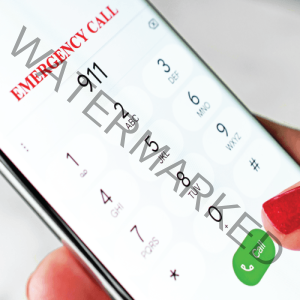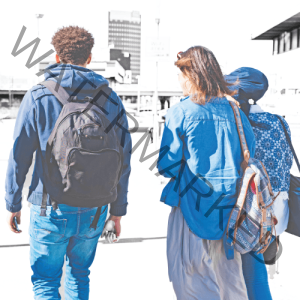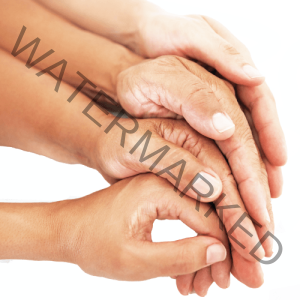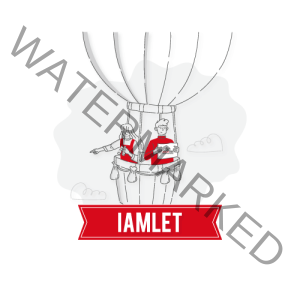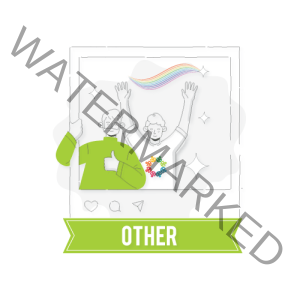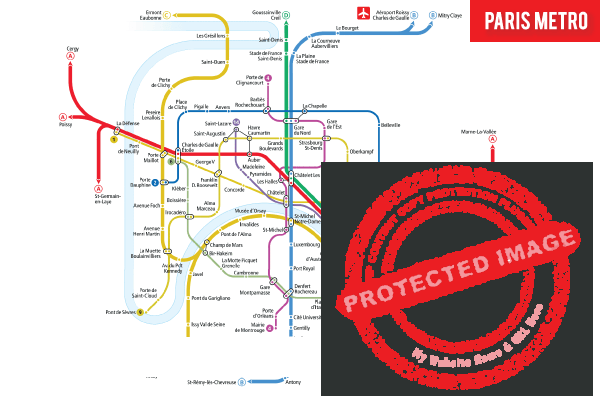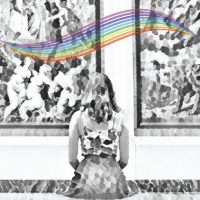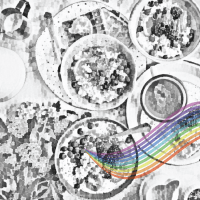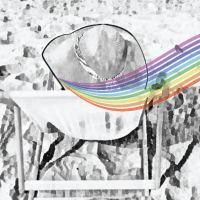
LGBTQIA+ Travel Guides:
Destination Paris - France
- Atilla Tiriyaki
- Average Reading Time: 12 minutes
- Travel
- articles, atillat, guides
Located in Western Europe, the city of Paris is the capital of France. The city is 105 square kilometres (41 square miles) and, in 2020, has an estimated population of 2.15 million residents. Paris is part of the Ile de France region (the Island of France) and is home to 18% of the French population. Paris is made up of twenty districts known as arrondissements and boasts two UNESCO world heritage sites (the banks of the River Seine and the Palais of Versailles)
In 2019, Paris received 38 million visitors, making it the second most visited destination globally. Though the city is ranked second, in terms of the most expensive cities to live in, there are many free and affordable ways to enjoy a trip to Paris. Visiting Paris throughout the year can be a very different experience. The Spring and Summer months are typically warm and sunny, with average temperatures ranging from 15 to 20 degrees Celsius (59 to 68 Fahrenheit). The Autumn and Winter months are usually colder, with average temperatures ranging from 4 to 12 degrees Celsius (39 to 53 Fahrenheit). The best months to visit for those seeking a warmer experience are June to August. For a colder experience, the best months to visit are the months leading up to Christmas (November to January).
Some interesting facts you might not know:- The city of Paris dates back to 8000 BC; however, it did not grow into a city until 250 BC
- Paris is known as the City of Lights because it was the first city in Europe to introduce street lights in 1889, and today, it has over 345 thousand light sources across the city
- Paris has over 1,000 drinking water fountains, providing free, clean and drinkable water to residents and visitors. In addition to standard water fountains, Paris currently has eight free sparkling water fountains, with plans to introduce more over time. The only thing to remember is to bring your water bottle with you
- France is home to over 1,000 different types of cheeses and over 27,000 wine-producing wineries
- France gifted the Statue of Liberty to the United States of America to celebrate their independence; however, Paris is also home to five statues of liberty which can be found around the city
- Paris is home to impressive and old architecture. One of the oldest houses in the city can be found at 51 Rue de Montmorency and was built in 1407. The oldest bridge in the city is the Pont Neuf, which was constructed in 1607 and still stands today
- Paris has the highest number of Michelin star restaurants than any other city in the world
- Paris is green, with 450 parks and gardens and over 470 thousand trees throughout the city
Paris is a well-connected city, with two international airports and seven main trains stations connecting Paris to the rest of Europe and the world, making it easy and affordable to visit
AIRPORTS- Paris Charles de Gaulle (///flesh.honestly.left – CDG (IATA) | LFPG (ICAO)) is an international airport and is located 23 kilometres (14 miles) northeast of Paris. The airport offers direct flights to most countries worldwide and is home to many national and low-cost airline carriers. The RER B(Blue) train connects the airport to the city’s centre and the journey time is approximately 40 minutes. Trains are frequent, with passengers typically waiting no more than twenty minutes for the next train. Taxis are available and will charge a flat-rate fee of 55€ to the city centre, and there are also bus and shuttle services available
- Paris Orly Airport (///packet.layover.cried – ORY (IATA) | LFPO (ICAO)) is also an international airport and is located 13 kilometres (8.1 miles) from the city centre. You can get to and from Orly by taking the Orlyval metro. You are required to change at the train station Gare Anthony, where you can connect to the RER B (Blue) or RER C (Yellow). Both train lines will take you into the city’s centre with a total journey time of one hour. Taxis are available and charge a fixed fee of 35€, which takes approximately 30 minutes. In addition to the metro and taxis, there are also many buses and shuttle services available
TRAINS
Paris has an extensive train and metro system, which connects the city to the rest of France as well as neighbouring European countries
- Gare de Bercy (///strays.caps.graphic) – connects trains to and from Italy
- Gare de Lyon (///tropic.armrest.quiz) – connects trains to and from Germany and Switzerland
- Gare du Nord (///dial.bugs.defeat) – connects trains to and from Belgium, the Netherlands, Germany and the United Kingdom
- Eurostar at Gare du Nord (///dial.bugs.defeat)– the high-speed train connects London, Brussels and Paris. A single trip can cost as little as 25€ and takes approximately two and a half hours. The train travels between London St Pancras, Ebbsfleet (home to the Blue Water shopping centre). Ashford, and Lille, on route to Gare du Nord in Paris. The timetable and prices can be found by visiting Eurostar (https://www.eurostar.com/uk-en)
Interactive Airport Terminal Maps
- Paris Metro – the Paris Metro is used by 5 million people each day, and the 300 stations are connected along the 219 kilometres or 136 miles of metro lines. Visitors can purchase a ‘Paris Visite’, which offers a one-day or seven-day pass. The cost will depend on the duration and required zones; however, the cost can range from 12€ to 65€ and can be purchased in advance by visiting RATP (https://www.ratp.fr/en/titres-et-tarifs/paris-visite-travel-pass). RATP, the operators of the Paris Metro, are working to improve accessibility across the network. Many stations are only accessible via stairs and do not have facilities for people with disabilities. Today, only nine out of three-hundred stations offer facilities for the disabled. The other important thing to note is that the Paris Metro typically does not announce upcoming stations, so you have to remain alert in order not to miss your stop
- Bicycles – Paris is a paradise for cyclists with 700 kilometres (430 miles) of cycling routes across the city. The city operates a hop-on, hop-off bike rental scheme known as Velib Metropole. The bike scheme has over 15,000 bikes scattered around the city and can be rented for minutes, hours or days. Rentals cost as little as 1€ for 30 minutes, and you can purchase visitor passes from Velib Metropole (https://www.velib-metropole.fr/en_GB)
- Hop-on, Hop-off Buses – another option is to buy a bus sightseeing ticket, in which you can hop-on and hop-off at all of the major attractions and monuments across the city. A 1-day pass can cost 40€, with many typically offering discounts to major attractions. Companies such as the Big Bus Tours provide pre-booking discounts and can be purchased by visiting Big Bus Tours (https://www.bigbustours.com/en/paris/paris-tour-tickets-and-passes/)
- Nothing beats walking around if you want to see the city up close. The streets are often wide, and many monuments and attractions are close together, so walking is a viable option
Interactive Paris Metro
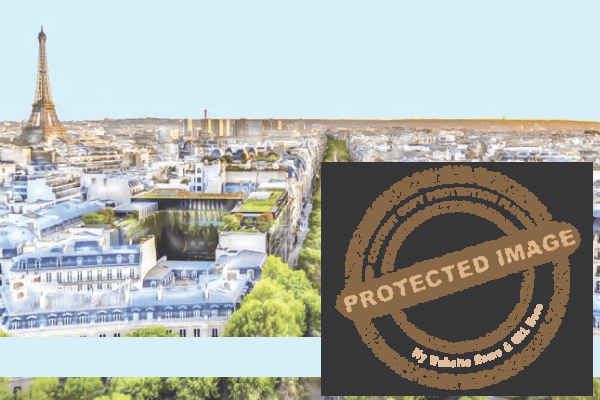
- Latin Quarter – The Latin quarter is in central Paris and is home to Sorbonne University and student-filled cafes. It is close to Notre Dame and the Jardin de Luxembourg and has many boutique hotels. The Hotel La Lanterne (///backed.tonight.thick) is central, but at the same time offers luxury and facilities such as a Turkish Hamman and indoor swimming pool. Rooms start from 200€ per night (or 100€ per person), and discounts are available when you book four or more nights. It is important to note that you will typically be offered a complimentary breakfast when you book directly. You can discover more by visiting Hotel La Lanterne’s website (https://www.hotel-la-lanterne.com/)
- Le Marais – is in the aristocratic district of Paris and is home to many outstanding buildings, many of which hold historical importance. The area has become popular with Parisians and the LGBTQ+ community alike. The Hotel Les Tournelles (///user.tunnel.glitter) is housed in a 17th-century building offering 24 rooms, a lounge and an honesty bar, with breakfast being served in a cellar made of vaulted stone. The stunning rooms start from as low as 120€ per night (or 60€ per person). The hotel offers guests complimentary breakfast, early booking discounts, and discount prices when you book directly. You can check prices and book with Hotel Les Tournelles by visiting their website (https://www.lestournelles.com/)
- It is important to note that whatever price you pay for your accommodation, you will typically have to pay an additional tourist tax. The tax is collected by your accommodation provider and paid directly to the city. The tourist tax is paid per person and ranges from 50 cents to up to 5€ per day
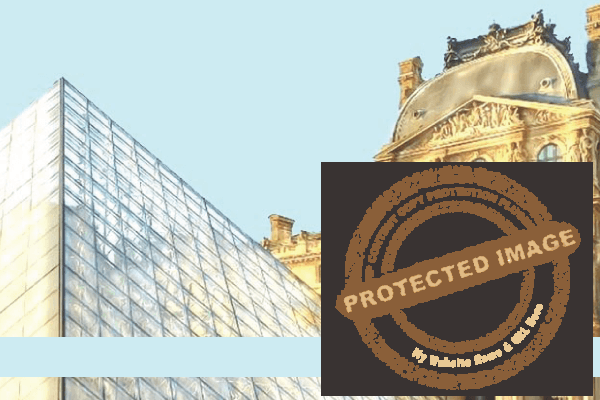
- Eiffel Tower (///investor.savings.lance – closest stations Trocadero (9) / Bir Hakeim (6) / Ecole Militaire (8)) – the impressive 1,000 feet monument, made entirely from metal and is one of the most iconic within the Parisian landscape. The Eiffel Tower took two years to build and was initially meant to be a temporary structure for the World Fair in Paris in 1889. Visitors to Paris can pre-book by visiting Tour Eiffel (https://www.toureiffel.paris/en/rates-opening-times) to visit the top of the tower. Another option is to have a meal in the impressive structure. There are three options available, the First-floor terrace (first floor), the Jules Verne (second floor) (https://www.restaurants-toureiffel.com/en/jules-verne-restaurant.html) and the Buffets (first and second floor). For those wanting beverages they can take in the sights by having a few drinks in the Macaroon Bar (second floor) or the Champagne Bar (top-level) (https://www.restaurants-toureiffel.com/en/champagne-bar.html)
- The Louvre (///seasons.sharper.scan – closest stations Louvre Rivoli (1) / Palais Royal Musée du Louvre (1)) – one of the most visited destinations in Paris is the Louvre. The Louvre was founded during the French revolution in 1793. The Louvre’s majestic buildings house 38,000 art and sculptures, and the famous glass pyramid became a permanent addition in 1989. To avoid disappointment and to skip the queues, you can book tickets in advance by visiting the Louvre website (https://www.ticketlouvre.fr/louvre/b2c/index.cfm/home)
- Sacre Coeur (///offshore.willing.grades – closest stations Anvers (2) / Abbesses (12)) is an impressive roman catholic church dedicated to the sacred heart of Jesus. The Sacre-Coeur is the second most visited monument in Paris. This white monument stands at the summit of the butte Montmartre. A visit to Sacre-Coeur is not only a fantastic experience, but you also get stunning views across the city. Guided and free tours are available; discover more by visiting the Sacre-Coeur website (http://www.sacre-coeur-montmartre.com/)
- Notre-Dame de Paris (///rashers.twice.balanced – closest station Cité (4)) is an example of Paris’ impressive French gothic architecture. A landmark featured in Victor Hugo’s novel, ‘The Hunchback of Notre-Dame’, this stunning building was built in 1345. Sadly in 2019, a fire destroyed the spire and most of the roof. Work is underway to restore the church to its former glory, with plans for the restoration to be completed by 2024
- Père Lachaise Cemetery (///logs.trout.shams – closest stations Philippe-Auguste (2) / Père Lachaise (2 and 3) / Gambetta (3)) is set over 44 hectares or 110 acres. It is the most visited necropolis in the world. Pere Lachaise was the first garden cemetery and is home to famous residents, including Chopin, Edith Piaf, Oscar Wilde and the Doors, Jim Morrison. The cemetery is in central Paris and is peaceful and home to impressive statues and mausoleums
Paris is a gay-friendly city, with many laws protecting the community. Though there are many conservative groups, the majority are tolerant and welcoming. France, as a country, decriminalised same-sex acts in 1791. Though not illegal, it was common for the police to arrest people using the indecent exposure law. The law and persecution ended against the community when repealed in the 1960s. France has frequently been named one of the most gay-friendly countries globally. Areas such as Le Marais, Quartier Pigalle, and Bois de Boulogne are all home to thriving LGBTQ+ communities.
France legalised same-sex marriages in 2013 and have in place laws prohibiting discrimination based on sexual orientation and gender identity. From 2017, the transgender community could change their legal status without undergoing surgery. Simply put, Paris and France are gay-friendly, welcoming and home to a thriving community.
A condition known as the Paris Syndrome describes a person disappointed when Paris does not live up to their romantic expectations. Though many films and tv shows depict Paris in a specific way, to say Paris could disappoint in my option is wrong. Paris is a vibrant city, full of historic and beautiful buildings, large open spaces and things to do that could keep you busy for a very long time. Parisians are considered abrupt; however, no more than any other city I have visited. When speaking to people around the city, they often become much more talkative once they know you better. An attitude that is driven by the fact that many Parisians do not believe in fake hospitality.
Visiting Paris does not need to break the bank. If you plan ahead, you can experience this amazing city, seeing many of the attractions and monuments on offer. I have listed several major attractions and monuments; however, many more are to be discovered. France is vast and full of distinctly different areas, regions, and communities.
If you have visited before, consider visiting again and potentially staying in a different area, as typically no one experience in Paris will ever be the same. If you have not yet been to Paris, I hope this article helps you consider putting Paris firmly on your to-do list.
Vive la Paris!!!

